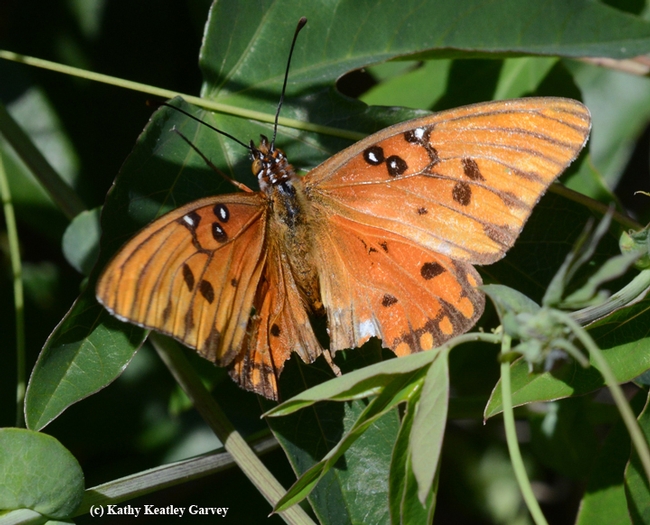It's a predatory world out there.
Newly emerged Gulf Fritillaries (Agraulis vanillae) are fluttering around the yard--nectaring on lantana, finding mates, mating, and trying to avoid predators. The females are laying tiny yellow eggs on their host plant (Passiflora). Soon we'll see caterpillars and chrysalids and more Gulf Frits.
Every stage may be the end. A Western scrub jay may snatch a Gulf Frit adult in flight; wasps, lady beetles and spiders will devour the caterpillar eggs; and parasitoids and wasps will attack the caterpillars and chrysalids. Over the years we've watched scores of Western scrub jays dining on the caterpillars (ah, worms!) and feed them to their young, and European paper wasps and praying mantids targeting caterpillars and butterflies.
The predator-prey episodes usually involve six steps: encounter, detection, interaction, attack, capture and kill.
Nature's way.
If you look closely, the wings of the survivors tell the story. Pristine? Newly emerged and untouched. Ripped and torn? A predator encounter.
Attached Images:

Gulf Fritillary, Agraulis vanillae, laying an egg (see tiny yellow dot protruding from the abdomen.) (Photo by Kathy Keatley Garvey)

Signs of a predator encounter: wings ripped and torn--probably by a bird. (Photo by Kathy Keatley Garvey)

An adult Gulf Fritillary--wingspan still intact--basking in the sunshine. (Photo by Kathy Keatley Garvey)